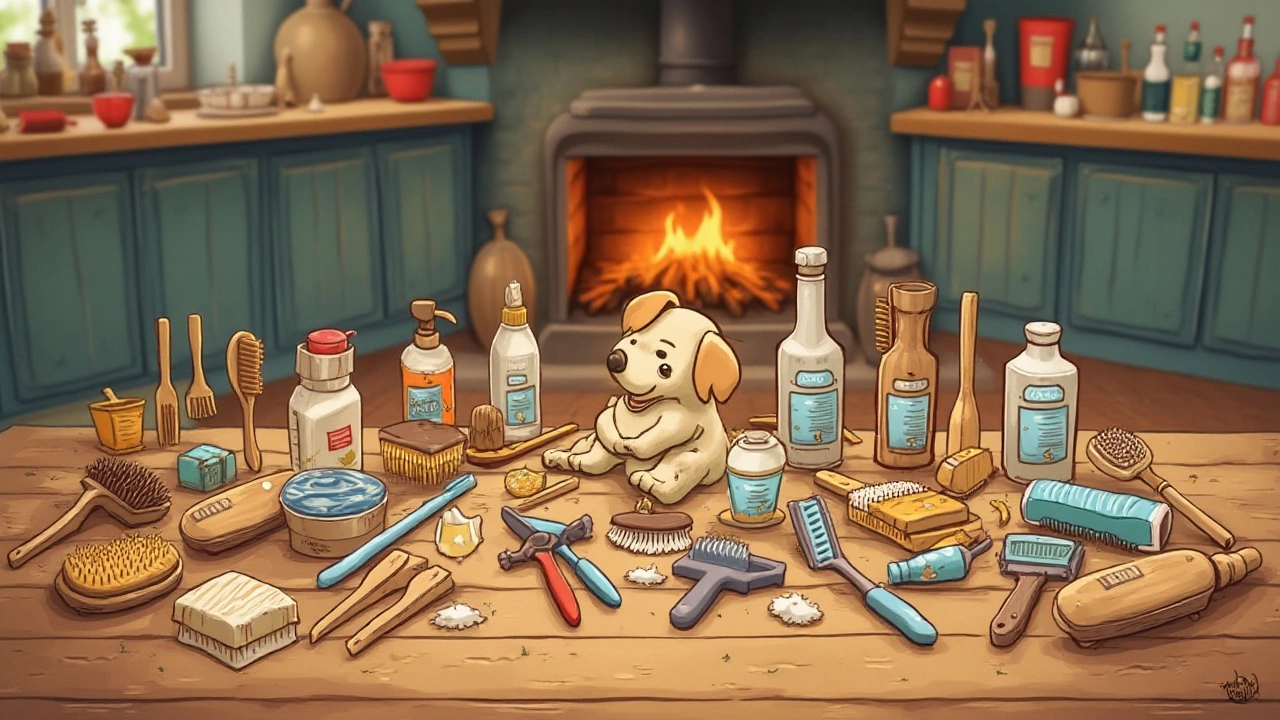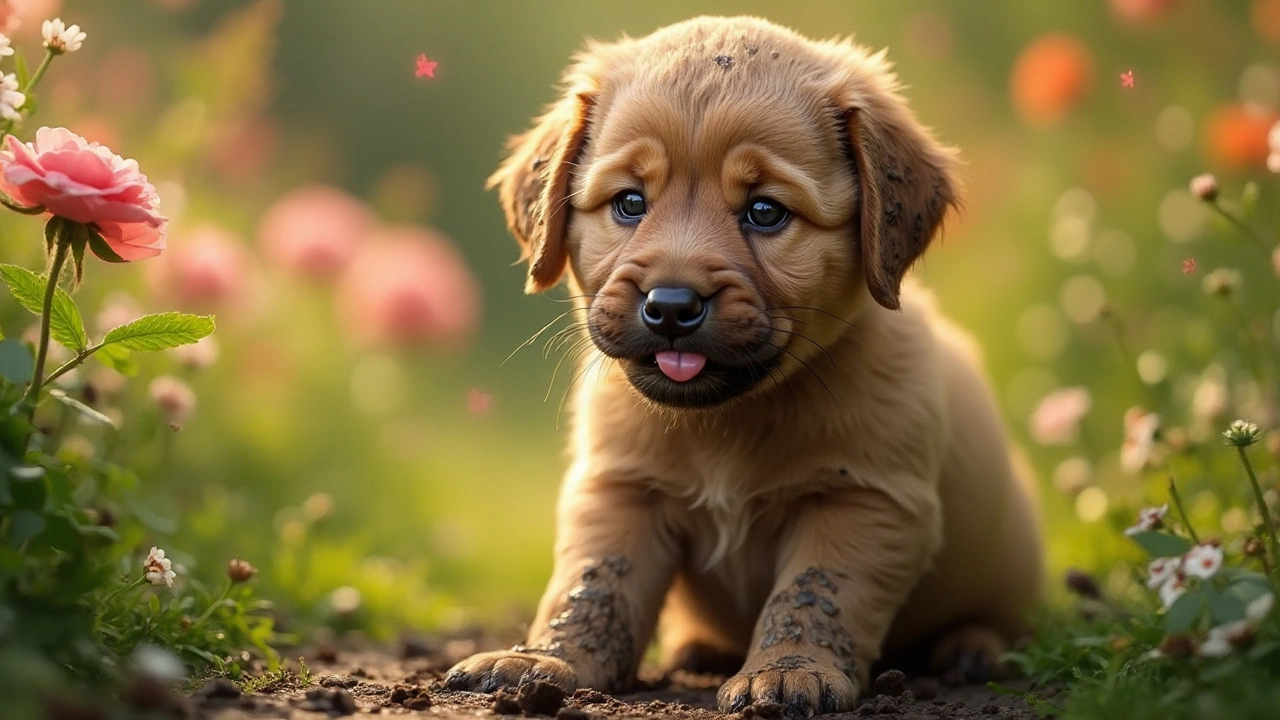Imagine this: you've just bathed your energetic puppy, and in two shakes of a tail, they’re mud-splattered and grass-stained again. Frustrating, right? Welcome to the amusing yet challenging world of what many dog owners jestingly call Dirty Dog Syndrome. The term might sound lighthearted, but it touches on a core aspect of puppy care that can leave owners scratching their heads.
In uncovering the mysteries of this so-called syndrome, we’ll dive into why some puppies seem to magnetize dirt more than others and debunk myths surrounding it. With an array of tips and insights, you’ll discover not just how to keep your furry friend clean but also embrace their nature without constant worry. After all, isn’t the joy of watching them romp freely just as rewarding?
- What is Dirty Dog Syndrome?
- Understanding Puppy Behavior
- Effective Grooming Techniques
- Tips for Maintaining Puppy Hygiene
What is Dirty Dog Syndrome?
Dirty Dog Syndrome is a playful term used by dog owners to describe the baffling phenomenon where a freshly cleaned puppy seems to attract dirt and grime almost instantly. Despite its informal nature, understanding this syndrome can be key to maintaining effective puppy care and hygiene. While not a true medical condition, it's a term of endearment that hints at a broader behavioral and caretaking challenge.
Generally speaking, puppies are curious creatures with a penchant for exploring their surroundings. This natural curiosity often leads them to places that are less than pristine, such as muddy patches after a rain or dusty nooks in the backyard. Their inquisitive nature, combined with their boundless energy, means they're constantly on the move, and often, this movement leads them into dirt and messes.
Why Does It Happen?
Several factors contribute to why some puppies, more than others, seem perpetually dirty. One reason is their coat type. Breeds with longer or denser fur, like Golden Retrievers and Shetland Sheepdogs, naturally collect more debris and require consistent grooming efforts. Additionally, puppies with lighter fur tones may show dirt more prominently than their darker-coated counterparts, making cleanliness challenges seem more apparent.
Another factor is their skin's oil production, which can vary from puppy to puppy. An active sebaceous system helps keep their skin and coat healthy but can also contribute to trapping dirt and odors. Furthermore, certain puppies produce more oils than others, leading to a faster build-up of grime.
Environmental factors also play a role. Puppies raised in rural or suburban environments, with ample outdoor space to explore, are exposed to more dirt opportunities than those raised in urban settings.
The Myth of Clean Puppies
It's important to debunk the myth that puppies can stay impeccably clean without effort. Engaging in normal puppy activities almost always guarantees some level of mess. Embracing the occasional dirt as part of their growth and development process is crucial. However, this doesn't mean owners should resign to perpetual messiness. Understanding the reasons behind this dirt-prone phenomenon paves the way for strategies to help manage it effectively.
Ultimately, the playful notion of Dirty Dog Syndrome provides a lens through which dog owners can better understand their pets’ behaviors and needs, while also directing attention towards appropriate grooming habits and care routines.
Understanding Puppy Behavior
Puppies, much like children in their endless quest to explore and learn, often find themselves in delightfully dirty situations. This behavior is not just a caprice of youth but a vital aspect of their development. Understanding Puppy Behavior provides insight into why dogs behave the way they do and how we can better manage it to maintain their hygiene.
Natural Explorers at Heart
Puppies are driven by curiosity. Their keen sense of smell guides them through the world as they investigate every nook and cranny of their environment. This natural urge to explore translates into frolics through mud, playful rolls in grass, and daring expeditions into damp areas.
The Role of Socialization
Socialization is a critical component in a puppy's life, significantly affecting their future behaviors. This process often involves a lot of outdoor activity, where a pup interacts with other dogs and people. During these activities, they are prone to picking up dirt and other elements, contributing to the Dirty Dog Syndrome predicament.
Stimulating Activities and Play
Puppies require physical and mental stimulation to thrive. Engaging in games such as fetch or tug-of-war not only fulfills their need for exercise but also exposes them to various environments. Each new terrain, be it sandy, dusty, or grassy, leaves its mark on a young dog's coat.
A well-stimulated pup is generally healthier and happier. The challenge lies in finding the balance between play and cleanliness, ensuring they get their exercise while also employing efficient grooming practices post-playtime.
The Importance of Routine
Puppies, like all dogs, benefit from routine. Establishing a consistent schedule for walks, playtime, and grooming can minimize the chances of dirt buildup. Knowing when and where your puppy is most likely to encounter messes allows you to plan ahead. Dealing with dirt becomes much easier when it's anticipated.
- Plan walks during dry weather to reduce mud-related messes.
- Designate specific play areas that are easier to clean.
- Always have cleanup supplies on hand after outdoor adventures.
Understanding the impulsive and excitable nature of puppies is key to tackling the Dirty Dog Syndrome. By embracing their playful spirit and setting up a structured routine, not only can you keep their spirits high, but you can also keep their coats cleaner, contributing to their wellbeing.

Effective Grooming Techniques
Grooming plays a crucial role in maintaining your puppy's hygiene and can be the key to overcoming the persistent challenge of Dirty Dog Syndrome. Understanding how to groom effectively can lead to a cleaner, happier pup and a more serene household. Here's how to master the craft.
Tools of the Trade
Before diving into grooming, ensure you have the right tools. A slicker brush is ideal for detangling fur, while a comb helps eliminate smaller knots. Don't forget a pair of quality nail clippers and a gentle puppy shampoo designed for your dog's coat type. These tools will be your best allies.
Brushing Basics
Regular brushing is key to keeping your puppy’s coat free of dirt and debris. It not only removes loose hairs but also helps distribute natural oils, contributing to a shiny, healthy coat. Aim to brush your puppy at least three times a week—more frequently if they have a longer coat. This frequency helps minimize shedding and keeps their coat in top condition.
Bathing Time
Many new dog owners wonder how often they should bathe their puppy. A general guideline is to bathe your puppy once a month to maintain cleanliness without stripping their coat of essential oils. Use a gentle, puppy-safe shampoo, and ensure a thorough rinse to prevent any residue from irritating their skin.
Perfect The Routine
Establishing a routine can make grooming a less daunting task. Start with brushing to remove tangles, then proceed with bathing. After the bath, towel-dry your puppy gently and follow up with a quick blow-dry if they're comfortable with the sound and sensation.
- Ensure all tools are prepared and within reach before beginning.
- Be gentle but firm—your puppy should associate grooming with positive, calm experiences.
- Offer treats and praise to build a positive association with grooming sessions.
The Power of Prevention
Grooming is not just about aesthetics. Regular sessions allow you to check for any unusual signs like skin irritation, parasites, or lumps. Vigilant grooming helps catch potential health issues early, ensuring your puppy stays healthy and vibrant.
As the saying goes, "An ounce of prevention is worth a pound of cure." By implementing consistent and effective grooming techniques, you can not only combat Dirty Dog Syndrome but also forge a stronger bond with your puppy, elevating their quality of life and happiness.
Tips for Maintaining Puppy Hygiene
Keeping your puppy clean is not only about having a fresh-smelling companion but also about ensuring their health and well-being. Let's face it, when it comes to puppy care, maintaining hygiene can be a bit of a balancing act between their natural joy for exploring and our desire to keep them clean.
Consistent Brushing
Regular brushing is essential, regardless of your puppy's coat type. Brushing helps remove dirt, prevent matting, and distribute natural oils. Use a brush suitable for your puppy's fur type, and aim to brush at least 2-3 times a week. For long-haired breeds, daily brushing might be necessary.
Proper Bathing Techniques
Over-bathing can strip a puppy's coat of its essential oils, leading to dry skin. Aim to bathe your puppy every 4-6 weeks, or when they visibly need it. Use a puppy-specific shampoo to ensure gentle cleansing. When bathing, never use hot water; lukewarm is ideal. Don’t forget to rinse thoroughly to avoid any soap residue.
Regular Ear Inspections
Many breeds with floppy ears, like Beagles or Basset Hounds, are prone to ear infections. Regularly check and clean their ears to prevent the build-up of wax and debris. A vet-recommended ear cleaner is usually the best choice, applied with a cotton ball or soft cloth.
Check the Nails
Though not directly linked to Dirty Dog Syndrome, long nails can lead to dirt traveling into the home. Trim your puppy’s nails every 3-4 weeks, or as needed, to avoid scratching and to minimize dirt collection.
Wipe Down After Walks
If your pup loves exploring, a quick paw and belly wipe after walks can keep dirt at bay. This habit not only sheds excess grime but also prevents your home from becoming a mess. Use disposable wipes or a damp cloth for a more eco-friendly option.
Balanced Diet
An often overlooked aspect of hygiene is nutrition. A well-balanced diet can lead to a healthier coat and skin, which inherently stays cleaner longer. Talk to your vet about the best diet for your puppy’s breed and life stage.
Exercise and Play in Clean Environments
Though chasing after sticks in muddy parks is a puppy’s paradise, try varying their play areas. Opt for cleaner environments like well-maintained dog parks or grassy backyards. A simple change can reduce the amount of dirt they bring home.
By following these tips, you'll find managing puppy hygiene not only practical but also rewarding. A clean pup is a happy pup, and maintaining their cleanliness is a testament to the care and love you provide. Remember, the occasional muddy adventure is part of their charm and a reminder of the free spirit they embody.
